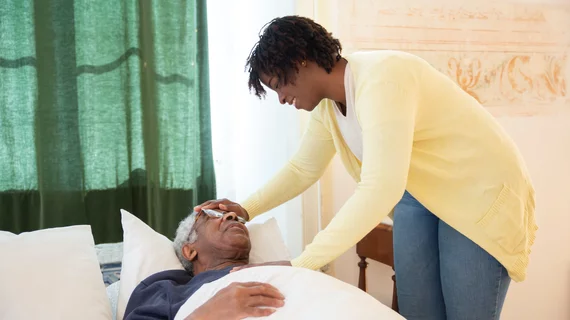5 things to know about unpaid caregiving (from a radiologist caregiver’s point of view)
After experiencing firsthand the burdens and rewards of caring for a sick loved one, an academic radiologist underwent an awakening of awareness. The influential physician found the life chapter instructive in its own right.
How educational was it? Enough that it moved the radiologist to write about it for an audience of his peers.
The journal is the November edition of RSNA’s Radiology: Imaging Cancer. The author is none other than the journal’s own editor, Gary Luker, MD, whose “day job” is with the University of Michigan and Michigan Medicine.
“My focus as a cancer researcher and diagnostic radiologist centered on understanding cancer biology, discovering better ways to diagnose and treat cancer, and translating those discoveries to patient care,” writes Luker in introducing his material.[1] “If work in all those areas succeeded (completely ignoring the many false starts and years along the path), surely those advances would be enough to solve the problems faced by patients and their caregivers.”
How shortsighted he was. But that was then and this is now. Here are five lessons Luker learned during his time as a long-term caregiver and from his growing appreciation of the role.
1. Estimates from the National Alliance for Caregiving “emphasize the immense scope of caregiving” in health and family care. Some 65.7 million Americans served as a family caregiver during the past year, Luker notes, adding that this number represents close to one-third of the adult population in the United States. What’s more, as the population ages, the caregiver headcounts are rising fast.
2. The average family caregiver spends about 25 hours a week on caregiving activities—and 25% of caregivers may devote more than 40 hours per week. Caregiving typically is not a short-term commitment, as the average caregiver devotes about four years to this role, Luker points out. The average age of a caregiver is around 50 years, and 33% are 65 or older. More from Luker:
“Many older caregivers themselves may be in fair to poor health, and most caregivers reduce time spent on their own healthcare in service of the person for whom they care.”
3. Responsibilities of caregiving fall disproportionately to women, who represent 75% of all family caregivers and spend up to 50% more time providing care than men. Estimates place the value of services provided by unpaid, informal family caregivers at over $500 billion dollars per year, which far exceeds the amount spent on paid home healthcare, Luker writes. More:
“These numbers are staggering and likely to grow, driven by factors including an aging population, shifts away from hospital-based care to outpatient, home-based healthcare, and increased costs of care facilities.”
4. No classroom instruction can prepare a person for the multifaceted demands of caregiving. “As the person designated as healthcare and legal power of attorney, I often made the final treatment plan decisions for my family member,” Luker shares. “Each time, I wondered if I made the right decision to balance likelihood of benefit versus risk and suffering.”
“Most importantly, I wanted to ensure that decisions respected the wishes of my family member. I had many sleep-deprived nights mentally rehashing health care decisions, wondering if I made the right call.”
5. No matter how overwhelmed a professional person feels by the demands of family caregiving, many others probably have it harder. “I know that what I regarded as a busy day of caregiving would be a day off for many informal caregivers,” Luker writes. “I could adjust my short-term schedule to account for my caregiving duties. My laboratory team took on extra responsibilities to account for my in-person absences at different times throughout a day.”
“Because of factors including less accommodating job situations, lack of paid family leave policies, and the effort and time duration of caregiving, many caregivers leave the workforce.”
In an accompanying opinion piece, RSNA communications executive Jennifer Michalek, MS, describes the 11 months she spent taking care of her mother from cancer diagnosis until death.[2]
“In addition to working full time and caring for my son,” Michalek writes, “I worked from early in the morning till late at night to ensure her house was clean, her medicine was organized, her visitors were scheduled, her appointments were arranged, and our family was coordinated to share in her caregiving. It was exhausting, but I didn’t dare stop to think about it. … Unfortunately, regardless of what is on one’s plate, life doesn’t slow down or show pity.”

